Phil Mickelson: how to win The Open
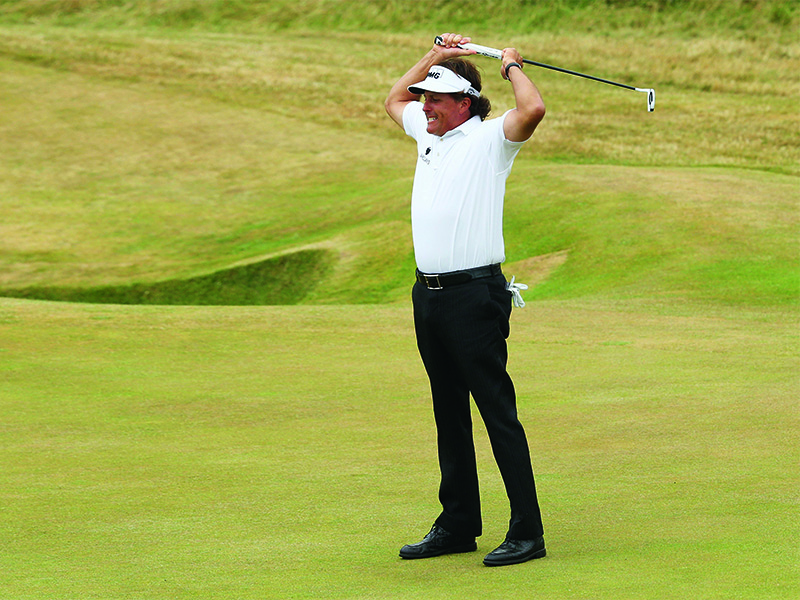
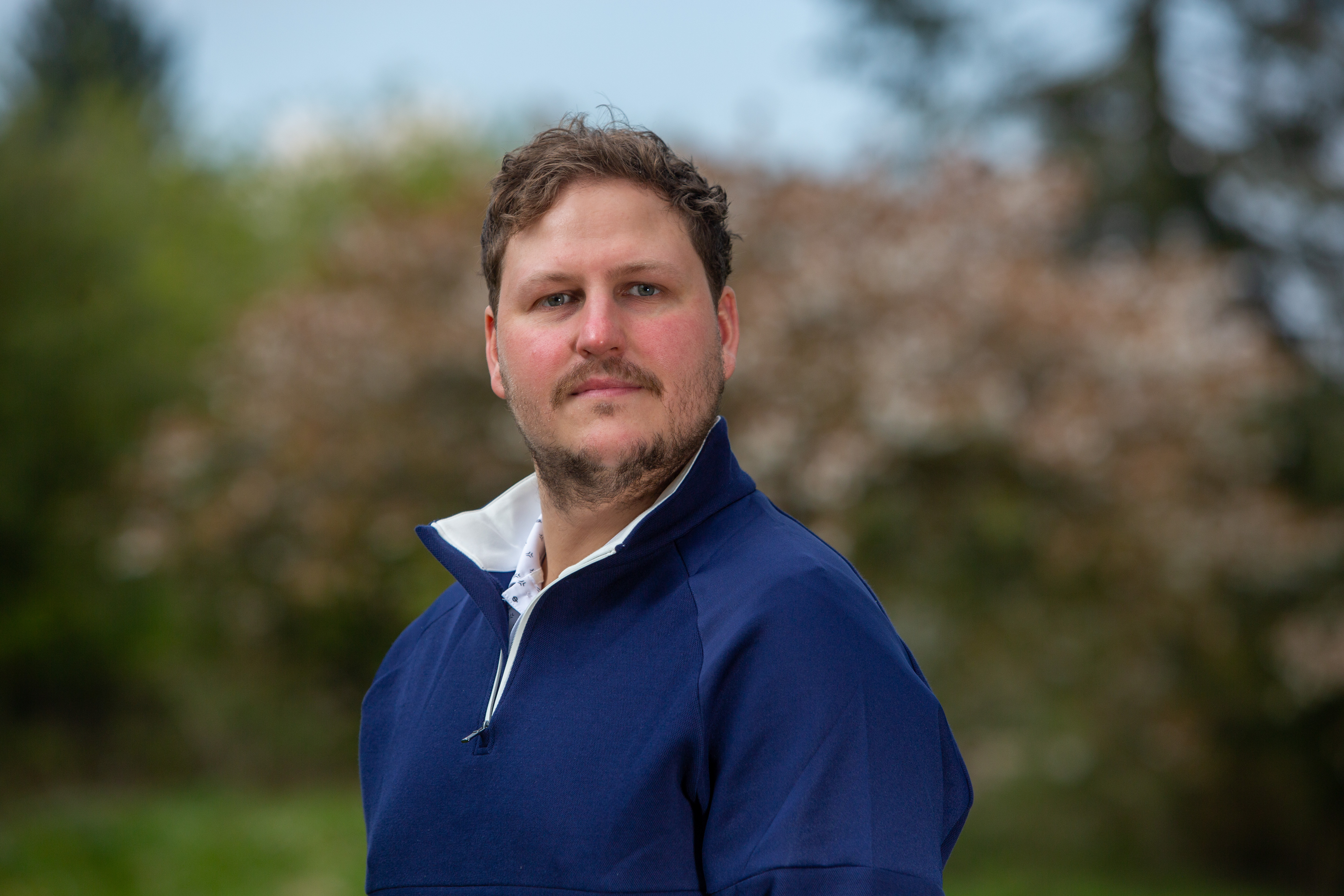
Iain Carter talks to Phil Mickelson about how Royal Troon changed his fortunes in the year's third Major and helped him understand how to win The Open
Phil Mickelson: how to win The Open
When Phil Mickelson arrives at The Open his mind will carry a myriad of thoughts, because Troon is a venue very close to his golfing heart. Standing on the elevated championship tee on the 1st hole, it is impossible to ignore the magnificence of the Isle of Arran and the distant granite dumpling that is Ailsa Craig. It is, weather permitting, a truly spectacular vista across the Firth of Clyde.
Yet Mickelson’s mind will also wander eastwards to the other side of Scotland. It was on the opposite coastline in 2013 that the veteran left-hander achieved the most emotional and satisfying victory of his career.
For a player of such imagination, flair and touch, his Open triumph at Muirfield was an epic win, affirming those qualities and proving that he was capable of conquering the most traditional form of the game.
Mickelson swept to victory with four birdies in the last six holes of a closing 66. “The round of my life,” he said while cradling the Claret Jug for the first time. Those memories will come rushing back when he turns up for the 145th running of golf’s most historic Major, because he’s returning to the place where this Open odyssey truly began.
It didn’t occur during his 1991 debut, even though his caddie that week, Ted Halsall, told him he was a future Open Champion. “I wasn’t so sure he was right. It was a longer process to get my game to accommodate links golf,” Mickelson admits.
Get the Golf Monthly Newsletter
Subscribe to the Golf Monthly newsletter to stay up to date with all the latest tour news, equipment news, reviews, head-to-heads and buyer’s guides from our team of experienced experts.
Indeed, it took 13 years until he visited Royal Troon for the 2004 Championship before he dared to believe. Until then, he struggled to control his ball because he imparted too much spin, especially when attempting to hit the low, running shots so crucial in conquering the elements of British seaside golf.
Related: Royal Troon – the key holes
Mickelson arrived in the Ayrshire town having broken his Major duck by winning the first of his three Masters. With the Major monkey gone, the Californian was determined to find a way to compete in Opens. The eureka moment came during a week when he finished one shot out of the play-off between Ernie Els and eventual champion Todd Hamilton.
When you ask Mickelson about that extraordinary week, it’s impossible not to detect his deep sense of satisfaction. “The year 2004 was really the big one for me. I started working with Dave Pelz and we began working on these shots that were lower, that would take spin off – not just for links golf, but also for wedges and for short-irons coming into back pins,” he explains.
“The ball wasn’t backing up and would come in a little bit flatter and be less affected by the wind. When I came to the UK and I played Troon that Open Championship, we had also worked on a tee shot that got on the ground quicker. That was just a low-flying tee shot that was almost hit half as hard as a full shot. It felt very easy and it got the ball down on the ground quick and without spin.”
This complex learning process played to Mickelson’s analytical approach. But categorising him in such technical terms would ignore the sublime feel he brings to the golfing canvas. He is a glorious mix of art and science. “I felt I had a good chance of ultimately winning The Open from that moment because it was really the turning point for me,” he adds.
This optimism contrasted with Mickelson’s initial observations on links golf after playing the 1991 Walker Cup at Portmarnock. “I wouldn’t say I didn’t enjoy it but I probably didn’t appreciate it as much,” he recalls. “I would get more upset with the crazy bounces and the crosswinds because I would play through the air. I think it took me a while to really appreciate the greatness of it.”
His greatest accomplishment
Mickelson was 43 when he won at Muirfield and recovering from the crushing disappointment of letting slip another chance to win the US Open, the Major he most craves.
At Merion that year, he was the only man under par, a shot clear of the field, heading into the final round. As usual, the conclusion played out on Father’s Day and this devoted dad of three was also celebrating his birthday. Everything pointed to Lefty lifting the US Open trophy for the first time. In fact, he woke that morning convinced the job had been completed. “I dreamt that I had already won the US Open,” he later admitted. “It was such a great feeling. And It took me more than a minute to realise that I still hadn’t played the final round.”
When the vivid dream turned to harsh reality, Mickelson was overhauled by Justin Rose. The American star had suffered an astonishing sixth runner-up finish in his national championship.
For someone who had come so close on so many occasions, spent more than 700 weeks in the world’s top ten and more than three years at number two (though never top dog), it was a bitter disappointment.
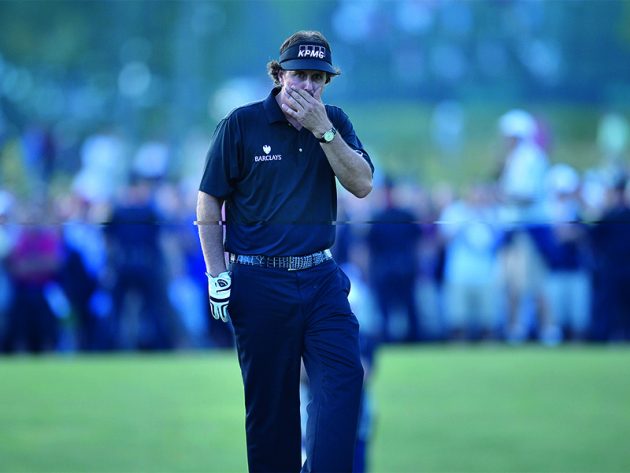
Next he went to the Greenbrier Classic and missed the cut before pitching up at Castle Stuart near Inverness for the Scottish Open. Mickelson always prefers to play the week before a Major to allow himself to hone his skills in a competitive environment.
He took the opportunity to cast off the Merion hangover and claim his first links victory. Revelling in the forgiving fairways and challenging greens on the shoreline of the Moray Firth, Mickelson won a play-off against South Africa’s Branden Grace.
He took form and confidence to Muirfield the following week. “The way I saw it was that having success on a links course greatly enhanced my opportunity to win the British Open,” Mickelson says. “Had I not won the Scottish I probably would not have won the British.”
That week, the East Lothian home of The Honourable Company of Edinburgh Golfers was baked hard and was the ultimate links test. With the techniques first honed at Troon in 2004, Mickelson knew he had the game to handle the conditions.
“I’ve played very effectively on the ground, keeping the ball low, playing in crosswinds, downwind,” he said before the Scottish Open. “Where I’ve struggled is on the greens. I’ve putted the native grasses very poorly. Putting in crosswinds is also brutally tough. Trying to guess and estimate how much the wind is going to affect the break is extremely difficult.”
At Castle Stuart, though, the short stick had proved reliable in often breezy conditions. Mickelson was finally ready. The previous two Opens were won by 40-something players, Ernie Els and Darren Clarke, and they too warmed up by playing the Scottish Open.
“We also had (Tom) Watson almost win at 59 years old at Turnberry,” Mickelson says. “The thing about links golf is that distance is not as big a factor because you have to avoid the bunkers. You have to be precise and it doesn’t matter if you are hitting a 3-iron or a 5-iron off the tee, you just have to put it in the right spot.”
And that is what Mickelson managed to do better than anyone else that sun-blessed week. He became only the 16th golfer to win three of the four Majors, having claimed the 2005 USPGA at Baltusrol along with the Masters titles in 2004, ‘06 and ‘10.
“The British Open is the greatest accomplishment I’ve ever achieved because of the shots that I had to learn and the challenge that it created,” Mickelson – the man who spent the days after his victory checking the trophy to confirm he wasn’t actually dreaming – admits.
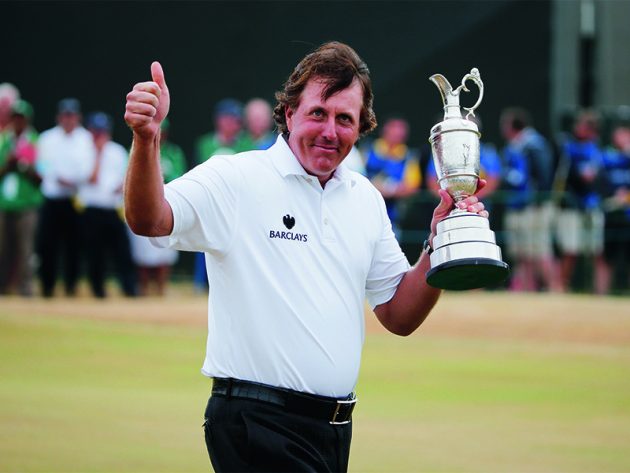
Still more to give
Such a victory might have proved a fitting finale to a great career. Last year, when he struggled to contend on the PGA Tour, time certainly seemed to be running out. Mickelson had other ideas. He took a painful decision to part company with Butch Harmon – his coach of eight years and the man who helped shape his game into that of an Open winner – before teaming up with Arizona-based Australian Andrew Getson.
The new teacher quickly diagnosed that Mickelson’s swing had become off plane, making it impossible to incorporate the nuances of shaping shots. “I’ve changed the shaft angle by about 12 inches throughout the swing, being more vertical back and shallower going through,” Mickelson revealed earlier this year.
“I don’t feel like I’m going to the range trying to find something, I feel like the swing is on plane fairly easy and now I’m just trying to work on the subtleties of fine-tuning a little fade, a little draw.”
The benefits became quickly apparent with three top-five finishes in the early part of 2016, and his good form has continued since then. Mickelson’s enthusiasm to compete remains undimmed. He loves his money matches in warm-up rounds with younger pros and maintains a disciplined practice regime.
At Doral, with light fading fast late on a March evening, he was the last player on the putting green. At the time he lay second after a brilliant opening 67 in the WGC-Cadillac Championship. He was a lone figure – caddie Jim ‘Bones’ Mackay had finished his duties – and Mickelson could be seen simply striking putt after putt in search of perfection.
“I don’t feel old at all, I feel great,” he says. “I guess maybe when you hang around these young guys as much as I have been, you just feel young.”
Not bad for someone managing psoriatic arthritis, a condition diagnosed in 2010 that could easily have ended his career. It leads to swollen joints and tendons and when it first struck, he struggled to walk. Nowadays, Mickelson follows a strict diet devoid of junk food and fizzy drinks.
Maybe that’s why he insisted that only “good stuff” would be poured from the Claret Jug in the year it was in his possession. His lofty regard for the prize, though, offers a better explanation. And he wants more success. Every day on the road, or at home in San Diego, begins and ends with exercises using resistance bands to aid flexibility and strength. Always a player who occupied the bulkier end of the spectrum, Mickelson is now a vocal ambassador for health and fitness.
At this year’s Masters his comments proved more impactful than his golf. Ahead of missing the cut, he showed his disdain for the modern golf swing. “You can play golf for a lifetime and injury‑free if you swing the club like Bobby Jones did, like Ernest Jones used to teach, where it’s a swinging motion rather than a violent movement,” he said. “A lot of the young guys continue to get hurt as they create this violent connected movement, and I don’t believe that’s the proper way to swing the golf club.”
Mickelson has always possessed a swing as fluid as his thoughts on the game. Even though he turns 46 on June 16, he is still fresh, flexible and mobile enough to challenge for another Claret Jug. Where better than at Royal Troon, the place where his Open story truly began? The sights of Arran and Ailsa Craig could prove the inspiration, but more likely is the knowledge that he has done it before.
As Mickelson says: “When I arrive as a past champion, it just feels terrific.”
All photography: Getty Images

Nick Bonfield joined Golf Monthly in 2012 after graduating from Exeter University and earning an NCTJ-accredited journalism diploma from News Associates in Wimbledon. He is responsible for managing production of the magazine, sub-editing, writing, commissioning and coordinating all features across print and online. Most of his online work is opinion-based and typically centres around the Majors and significant events in the global golfing calendar. Nick has been an avid golf fan since the age of ten and became obsessed with the professional game after watching Mike Weir and Shaun Micheel win The Masters and PGA Championship respectively in 2003. In his time with Golf Monthly, he's interviewed the likes of Rory McIlroy, Justin Rose, Jose Maria Olazabal, Henrik Stenson, Padraig Harrington, Lee Westwood and Billy Horschel and has ghost-written columns for Westwood, Wayne Riley, Matthew Southgate, Chris Wood and Eddie Pepperell. Nick is a 12-handicap golfer and his favourite courses include Old Head, Sunningdale New, Penha Longha, Valderrama and Bearwood Lakes. If you have a feature pitch for Nick, please email nick.bonfield@futurenet.com with 'Pitch' in the subject line. Nick is currently playing: Driver: TaylorMade M1 Fairway wood: TaylorMade RBZ Stage 2 Hybrid: Ping Crossover Irons (4-9): Nike Vapor Speed Wedges: Cleveland CBX Full Face, 56˚, Titleist Vokey SM4, 60˚ Putter: testing in progress! Ball: TaylorMade TP5x
-
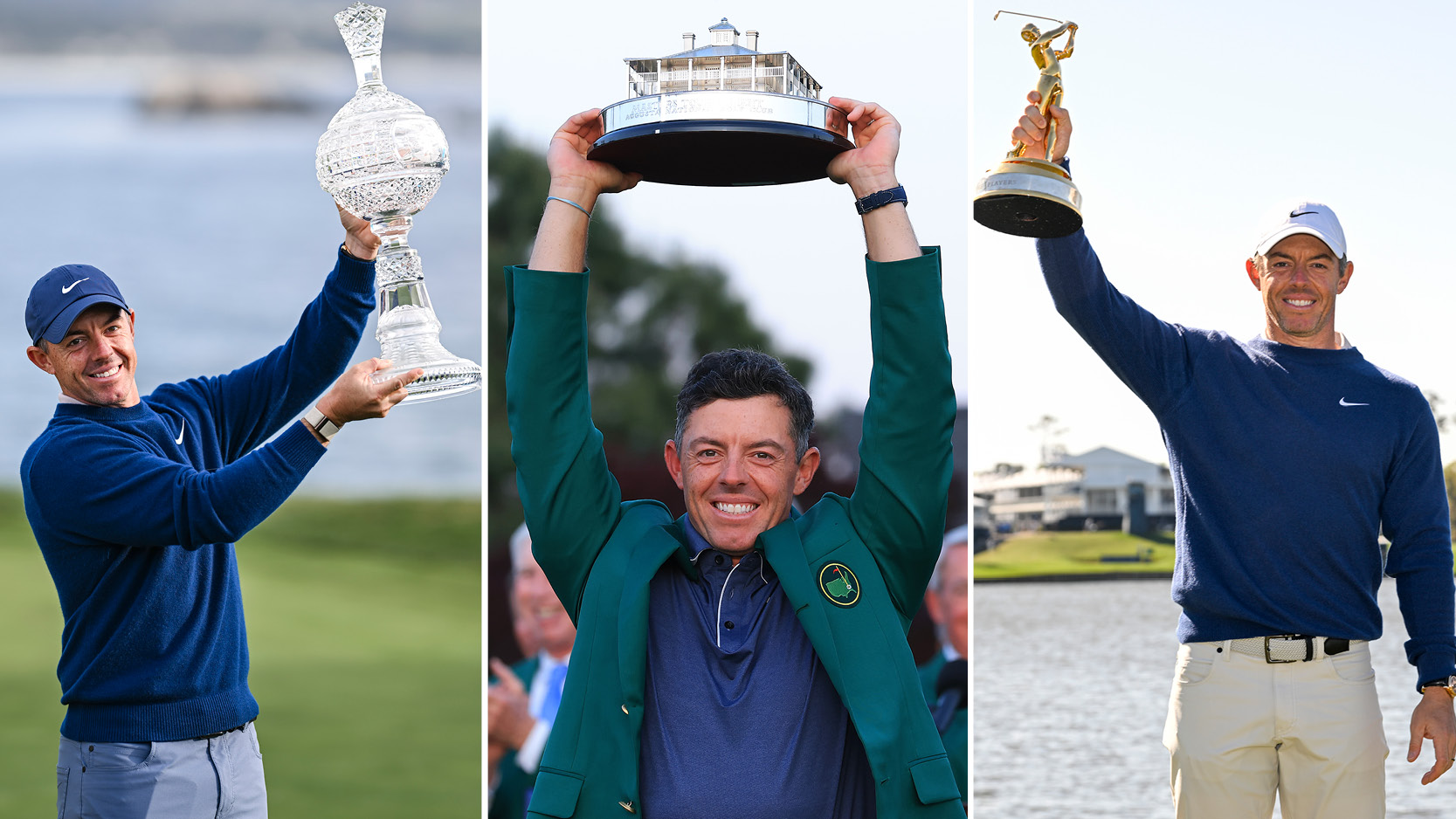 'He Won't Stop Striving For Improvement' - Sports Psychologist Believes Rory McIlroy Has The 'Mindset, Focus And Drive' To Carry On Excellent Start To 2025 Season
'He Won't Stop Striving For Improvement' - Sports Psychologist Believes Rory McIlroy Has The 'Mindset, Focus And Drive' To Carry On Excellent Start To 2025 SeasonWe spoke to experienced Sports Psychologist, Gareth Shaw, about McIlroy's incredible Masters win and how the five-time Major can push on even further in 2025
By Matt Cradock
-
 I Think I've Found My New Favorite Club Of 2025 And It Might Surprise You
I Think I've Found My New Favorite Club Of 2025 And It Might Surprise YouPGA Pro and driver expert Joe Ferguson has been testing out the latest of TaylorMade’s ‘retro’ mini-driver offerings, the R7 Quad Mini, and it didn't disappoint…
By Joe Ferguson